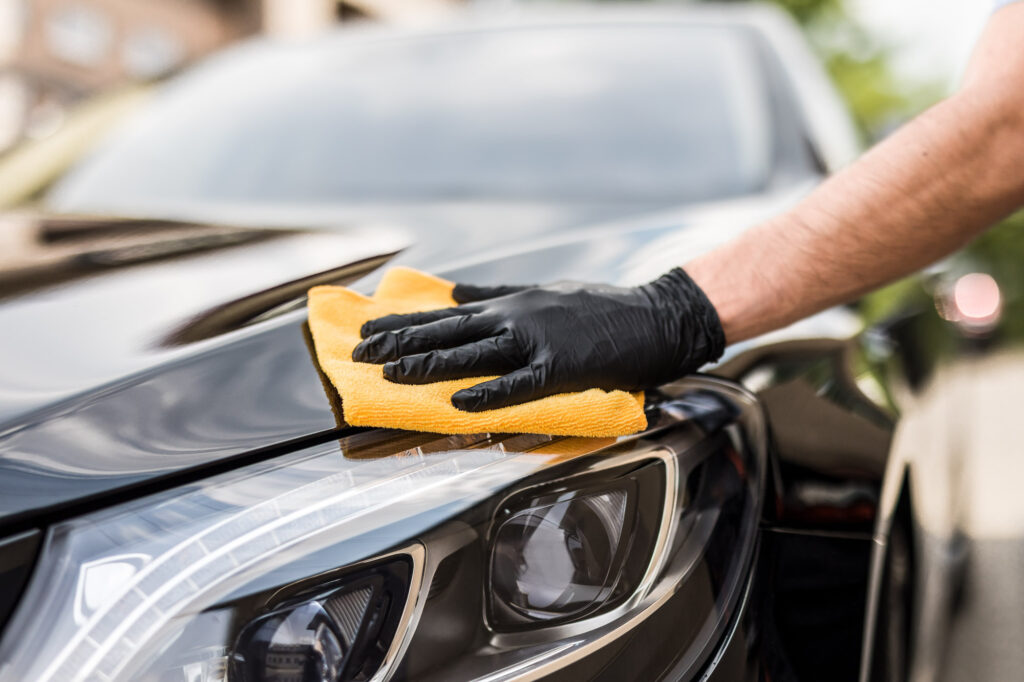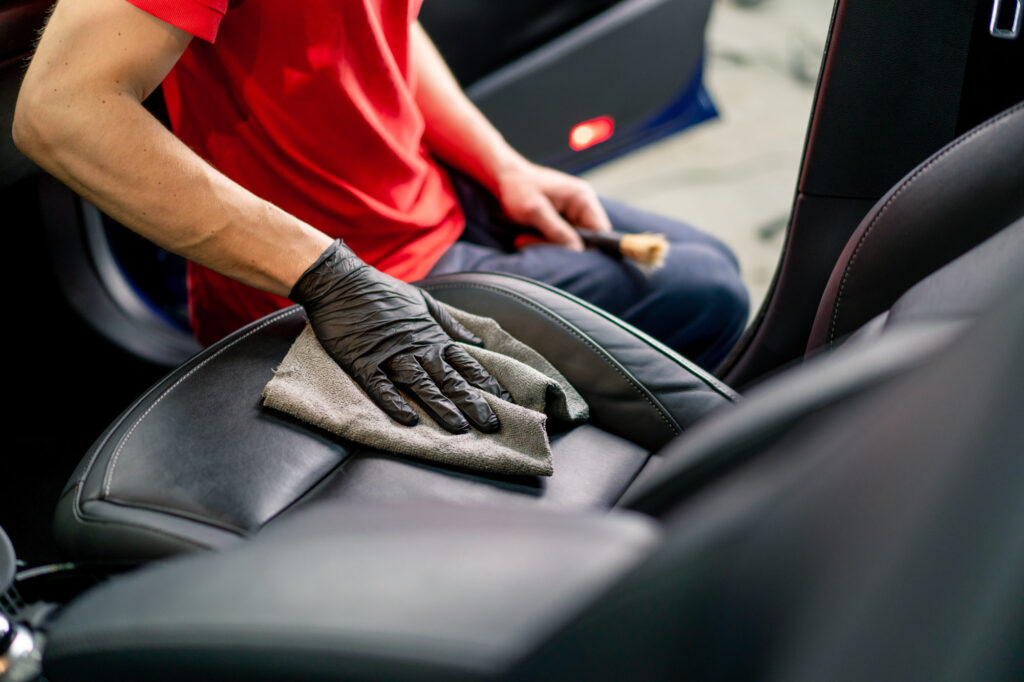Every driver should know how to wash their car, and one of the most important aspects of cleaning your vehicle is knowing which towel to use. There are many towels out there. For example, there are towels made of terry cloth, towels made of microfiber cloth, and even towels made of sheepskin.
Each of these cloths has unique properties that make them better suited for cleaning specific parts. Even if all of them are capable of retaining water, some are better at wiping glass clean than others. Let’s take a look at the different types of cloths designed for cleaning and detailing cars.
Different Types of Cloth to Use On Your Car

Terry Cloth
Terry cloths are one of the oldest and most reliable types of cloths used to clean all manners of things. Whether you want to wash your car or dry yourself after a shower, you can count on terry cloths to get the job done.
They are highly absorbent and durable, making them perfect for washing your car since they can retain a lot of water and soap. Because of this, they’re most commonly used to wash the body of a car rather than some of the more delicate parts that microfiber cloths are better suited for.
Despite this, terry cloths aren’t perfect. Many drivers prefer using microfiber and chamois cloths because terry cloths tend to get extremely heavy. Because they’re so absorbent, they can retain a lot of extra weight from water, making them difficult to use.
Key Characteristics
- Knit fabric made of absorbent fiber loops
- Fiber loops are woven in two opposing directions
- Absorbs up to 20-30 times its weight in water
- Often made of cotton, silk, bamboo, linen, and modal
- Also used to make bathrobes
Benefits
- Extremely effective at absorbing and retaining water
- Easy to care for and wash
- Soft to the touch
- Durable and long-lasting
- Made from sustainable materials
Microfiber Cloth
Arguably, microfiber cloth is known as the most effective when it comes to cleaning. It’s hard to find a material as gentle, dense, and absorbent as microfiber. Because it possesses all these qualities, it can be used to dust the inside of your car and dry the outside of it too.
There are different kinds of microfiber cloth. Plush microfiber is ideal for waxing and polishing vehicles. Waffle weave microfiber has grooves that help it scrub away gunk and dirt. On the other hand, chenille microfiber is thick and absorbent.
Bear in mind that microfiber cloths are delicate and should only be cleaned with other microfiber towels. Washing a terry cloth towel together with a microfiber towel might result in the latter retaining lint from the former.

Key Characteristics
- Made with microscopic fibers that are one denier or less
- Soft to the touch
- Light, yet incredibly dense
- Certain microfibers called split microfibers attract dust particles like a magnet
- Should only be cleaned with other microfiber towels
Benefits
- Incredibly absorbent. Absorbs quickly and effectively
- Dries quickly, preventing mold and bacteria buildup
- Dense and effective at cleaning dust and lint
- Good for many purposes
- Smooth and doesn’t scrape sensitive surfaces
Chamois Cloth
Known for being extremely soft and absorbent, chamois cloth (or chamois leather) differs from conventional towels in that it’s extremely dense and has properties reminiscent of skin. While most modern chamois cloths are made of synthetic materials, some are made of genuine sheepskin and leather.
Chamois cloth is one of the best choices when it comes to drying surfaces after a wash, and it works very well on surfaces that require a gentler scrub. Chrome and other shiny surfaces will retain their sheen after a chamois is used to dry it.
However, one major disadvantage that comes with using chamois cloths is that they’re more likely to scratch your vehicle than other cloths. This isn’t because the material is sharp or rough, but rather because they can collect deposits of sand, rock, and other hard yet minuscule materials and scrape your car. You’ll need to be extra careful cleaning with a chamois.
Key Characteristics
- Reminiscent of leather
- Supple and extremely absorbent
- Formerly made of porous goat leather
- Nowadays, they’re commonly made of synthetic fiber or sheepskin
Benefits
- Absorbs water quickly and effectively
- Smooth to the touch, perfect for cleaning shiny surfaces
- Long-lasting and durable
- Better at removing oil than other cloth types
- Can be used to dry and wash efficiently
Cloth for Cleaning Your Car’s Interior

While many cloth types are better suited for cleaning the exterior of a vehicle, some cloth types excel at cleaning interiors. Here are some of the different fabrics that work well when used to clean dashboards, consoles, and other interior compartments.
Waffle Fabric
Also known as honeycomb fabric, waffle fabric is distinguishable because of its unique weave. These cloths are often made of microfiber, using patterned squares and rectangles to clean sensitive surfaces and dry wet ones.
Because they’re usually made of microfiber, waffle fabrics don’t leave any lint when used. This makes them perfect for cleaning glass, mirrors, windows, and other clear surfaces.
Edgeless Cloth
Edgeless cloths are different from other towels because they don’t have rough seams and edges. This makes them perfect for cleaning glass and other sensitive materials because they’re nice and soft.
Edgeless cloth is also used to clean glossy surfaces because it helps retain the sheen whereas a rougher towel might leave scratches.
Chenille Microfiber
Last but not least, chenille microfiber is an excellent choice for cleaning some of the harder-to-reach nooks and crannies of your car’s interior. What distinguishes chenille microfiber towels from other kinds is how they have small “fingers” that help collect dirt and dust.
They do a good job of cleaning corners and tight spots and because of this, they’re perfect for wiping dashboards and consoles clean.
Any information provided on this Website is for informational purposes only and is not intended to replace consultation with a professional mechanic. The accuracy and timeliness of the information may change from the time of publication.


















